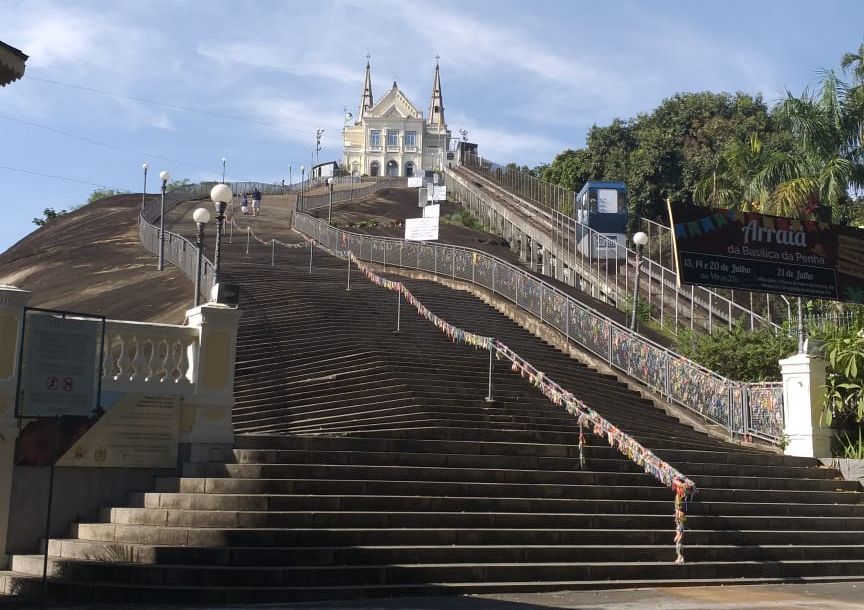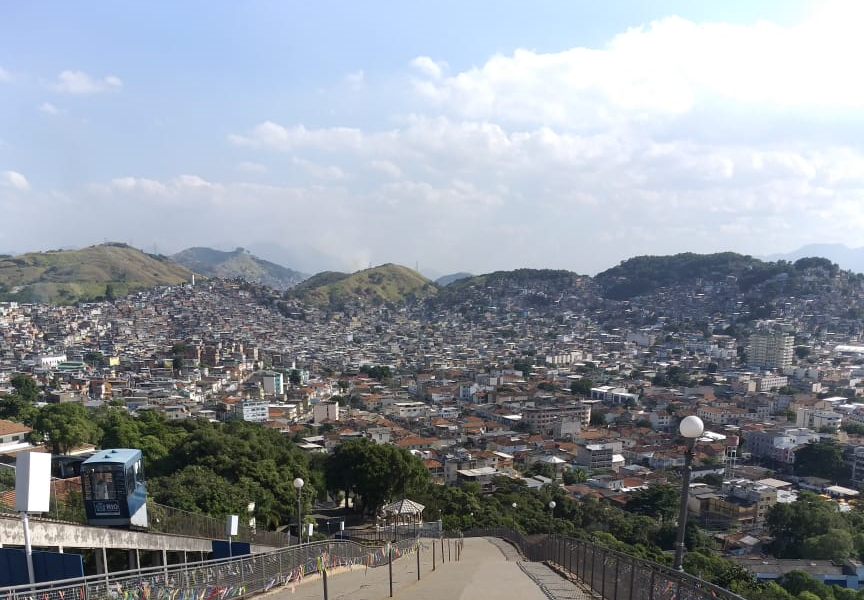RIO DE JANEIRO, BRAZIL – Penha Church (Igreja da Penha) is an iconic landmark of Rio de Janeiro but is little visited by tourists, despite its historic and religious significance.
Even if you do not know it by name, you have likely noticed a striking white church on a steep hilltop in the North Zone, probably when driving along Avenida Brasil or the Linha Vermelha. This is the Igreja da Penha or, to give its full name, A Basílica Santuário de Nossa Senhora da Penha de França.

A well-known point of religious devotion for locals, the church is also worth visiting for its architectural beauty and great views over the city.
The history of the church goes back more than 380 years to 1635. According to the foundation story, a local landowner called Captain Baltazar climbed the hill to survey his lands. On the hilltop, he was attacked by a snake and prayed to Mary for help. She promptly sent a lizard to rescue him, and in gratitude for this Baltazar built a chapel on the hill in her honor.

This chapel was renovated, altered and built upon over the years, finally giving us the present-day church in the Eclectic style with strong neo-gothic influences (the spires, for example).
The last significant renovation was by Portuguese architect Luiz de Moraes Júnior in 1902. During the papal visit of June 2016, Pope Francis elevated the church to the status of a minor basilica.
If you do not have a car, the easiest way to get to the Igreja da Penha is to take a train to Penha Station (Saracuruna/Gramacho line). From here it is just a 5-minute walk to the bottom of the hill.
Three separate, free funiculars will take you to the top of the hill if you don’t feel like walking. The first of these is just past the entrance close to the “moto-taxi” (motorcycle taxi) stand. Most healthy people will not have any problem walking up, but the funiculars offer great views and are worth taking regardless.

After the second of these, you will come to an open area that has food and drinks available, as well as a large shop selling religious items. The final leg is a 382-steps staircase cut into the rock of the hillside, and most people choose to walk this section as it is one of the main attractions of the church.
For the most devout visitors, there is a tradition of climbing these steps on one´s knees. The little colored ribbons tied along the stairs and elsewhere symbolize the “promessas” (religious vows) made by devotees.
Once at the top, take your time to look around and inside the church. You can also light a candle in the shrine outside. And be sure to enjoy the incredible views over Rio’s North Zone, perhaps not as spectacular as those of Corcovado and Sugarloaf (which can both be spotted to the south), but interesting, beautiful and much less photographed.

